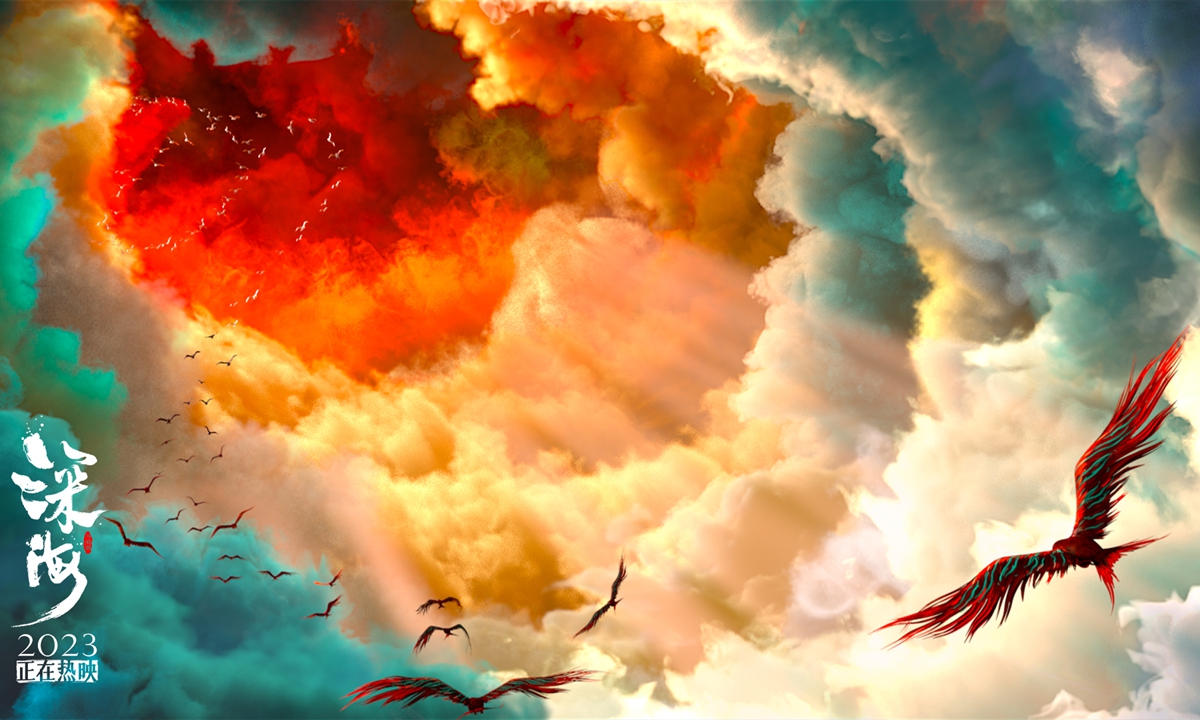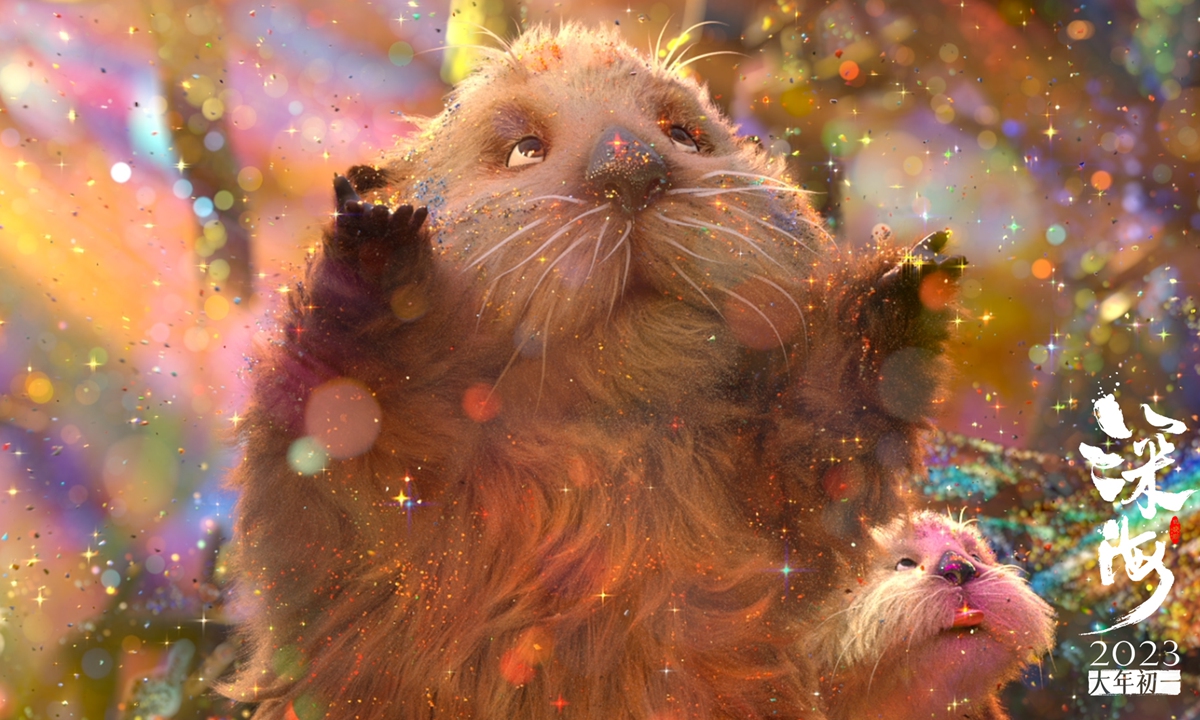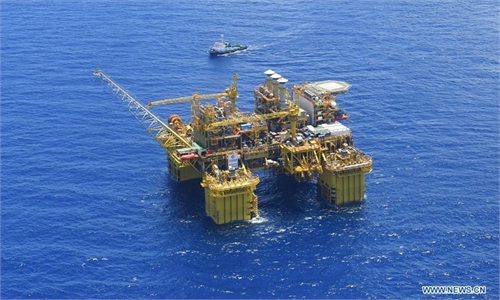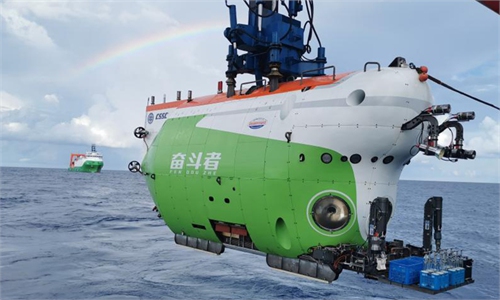
Promotional material for Deep Sea Photo: Courtesy of October Media
Out of his affection toward Jules Verne's most famous book Twenty Thousand Leagues Under the Sea, Tian Xiaopeng, the Chinese director behind the breakout animated film Monkey King: Hero is Back, has created his own underwater world in his recent animated movie Deep Sea. In his own words, he defines the term ocean as a "world beyond people's imagination," which reflects the deep confusion human beings have toward modern society.
It took him and his team seven years to bring Deep Sea to the silver screen during the 2023 Spring Festival.
The film later grabbed the interest of the Berlin International Film Festival, where it was nominated as one of the 73rd festival's Generation Kplus films. This visually stunning Chinese animation aroused the interest of movie insiders at the film festival and tickets sold out shortly after its release.
The festival's selection committee praised the film, calling it a stunning piece with never-before-seen visuals and ambitious storytelling.
Shortly after his return from Berlin, the Global Times interviewed Tian as well as members of his team to talk about their years making a movie that truly "represents China and Chinese aesthetics."
"The ocean is supposed to be like the sky above us. The fish thrusting through the deep sea, which is supposed to be colorful with layers and layers of tones that are just like the light refracting across the sky," Tian said, explaining his inspiration for the colorful ocean depicted in the film.
3D ink paintings
The movie tells the story of a little girl named Shenxiu, who is deeply sad after she is abandoned by her mother. During a cruise trip she accidentally falls into the ocean and enters a mysterious underwater world where she meets a chef at a magical undersea restaurant and goes on a magical journey after the pair became friends.
As for Tian, this is far from a simple sea-themed film.
"There is a deep sea in everyone's heart that stores your depression or confusion. The movie talks about that side of human beings," Tian said.
The movie has been praised for its innovation and breakthroughs in storytelling as well as visuals and particle ink painting technique, which enabled the animation crew to create a dreamy world inspired by traditional Chinese watercolor painting.
The particle ink painting technique is a new innovation from the Deep Sea team.
According to the team, the technique involves piling up countless digital particles to render objects, which blur the boundaries of solid objects in the scene.
The 3D technology that most animators around the world use today tends to render more realistic and concrete scenes when animators build their digital worlds. However, the particle technique in Deep Sea helps depict the abstract style that is the essence of Chinese ink painting, the team noted.
"It was supposed to be a contradiction between solid 3D animation and running ink art. But what we ended up doing was finding a way to combine the two together," one team member explained.
Examples can be seen all the time in the movie - jellyfish, whales and dolphins are all depicted in a flowing, dreamy style.
In the movie, there can be up to 100-200 million particles in a single frame. To create the scene "the eye of the deep sea," animators needed 2 billion particles to bring out the best visuals.
This is clearly an aesthetical innovation.
"I like to experience challenges during my career, and that is what Deep Sea is. The movie is ambitious and represents the hope of exploring new boundaries for Chinese animation through innovative technology and stories," said Tian.
Promotional material for Deep Sea Photo: Courtesy of October Media
Stumble and rise
Since China's first animated short Uproar in the Studio came out in 1926, Chinese animators have faced an uphill battle when it comes to their works.
One problem they unanimously bring up is the way Chinese moviegoers see animation: Over the past few decades most moviegoers have come to think of animation as simple family carnivals, as animators stopped exploring social issues in their works.
"In very early years of Chinese animation, we followed a basic structure like most commercial movies do: We had had a story that built upon itself and transitioned from one point to another, depicting the growth of a young protagonist. But in the past decades' of animation development, a certain part was held back in order to cater to consumers and animation stopped growing and so remains a family carnival," Cai Zhichao, a teacher at the China Academy of Art, said in a recent interview with the Guangming Daily.
But now, Chinese movies are making breakthroughs by investing more elements that reflect the core of the Chinese spirit.
The 2015 movie Monkey King: Hero is Back, was a breakthrough hit hailed by critics and audiences for its modern exploration of traditional Chinese culture. Earning 956 million yuan ($139 million), it broke box office records and began a new chapter for Chinese animation.
Fortunately, breakthroughs and innovation are Tian's bread and butter.
For Tian, Monkey King: Hero is Back was the first step in the revival of traditional styles, while Deep Sea is another brand-new step in innovating Chinese aesthetics.
"Chinese animation should find what makes it unique," Tian said.



